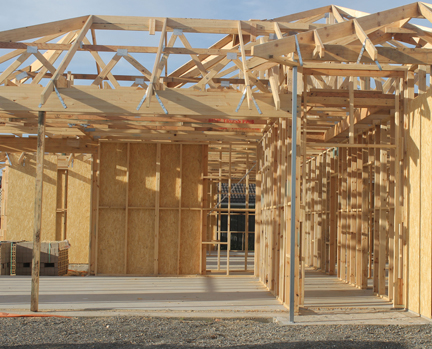
An international conference at Methven in Canterbury in March will add fuel to straw-earth buildings being the way of the future for New Zealand homes and make targeted comment about a lack of vision in our forestry sector. Source: Forestryexpo
Many New Zealand houses are made of natural earth and straw materials, which are hugely popular in Europe as supplies of cement and steel for architecture begin to dwindle in the next 15 years.
Straw, earth and human ingenuity is beginning to play a big part in the changing face of building construction.
Traditional brick and wooden house walls lose more heat than a straw bale building.
Nearly 200 builders, home owners, engineers, architects and designers, building officials, housing providers, building suppliers, farmers, researchers and academics will attend the international straw build conference in Methven on March 3 to 9.
The conference includes many international and New Zealand leaders discussing natural building issues, topics, progress and successes.
Conference organiser Mr Hall says New Zealand has a suite of Earth Building Standards, which allows local authorities to have means of assessing building applications using earth. But other forms of construction such as straw bale and hempcrete have no official guidelines.
“It is fairly straight forward to apply for building consent for a conventional timber framed house because there are set guidelines and standards. Where these don’t exist it is much harder and there are fewer people with expertise,” Mr Hall said.
“But the research and development into natural buildings is carried out by people without backing from government or business. We want to change that. The problem is that our forestry industry is focused mainly on a single species that requires toxic treatment. Thankfully there are some exotics and sustainably managed native forests that provide options for those who know there are alternatives.
“It is reassuring that there are timber merchants who specialise in untreated timber, that there is at least one earth plaster commercially available as well as silicate based paints. The rise in acceptance of wool as an insulation product is also encouraging.
“Concrete and steel have a hefty carbon footprint. We should be trying to use less of these materials in our buildings. The staunchest among us would say we shouldn’t use them at all.
“The very elegant Pompallier House in Russell is one of the oldest surviving natural buildings in New Zealand, it was constructed in 1842 by French priests using rammed earth. Today it is a thriving tourist attraction.
“Earth buildings built to the specifications of NZ Earth Building Standards performed really well in the 2010 and2011 Canterbury earthquakes.
“There are some exciting developments in straw panel construction and we are really excited by this and think that there is a real potential for this in New Zealand – particularly in Canterbury, the grain bowl of New Zealand where there is an enormous need for warm, healthy houses with a light environmental footprint.
“Why on earth are the grain fields of Canterbury being taken over by farting cows? Growing crops where the whole crop is used has got to be good business – grain heads and grain stalk, hemp where the whole plant can be used for fabrics, oils, and building material,” Mr Hall said.





